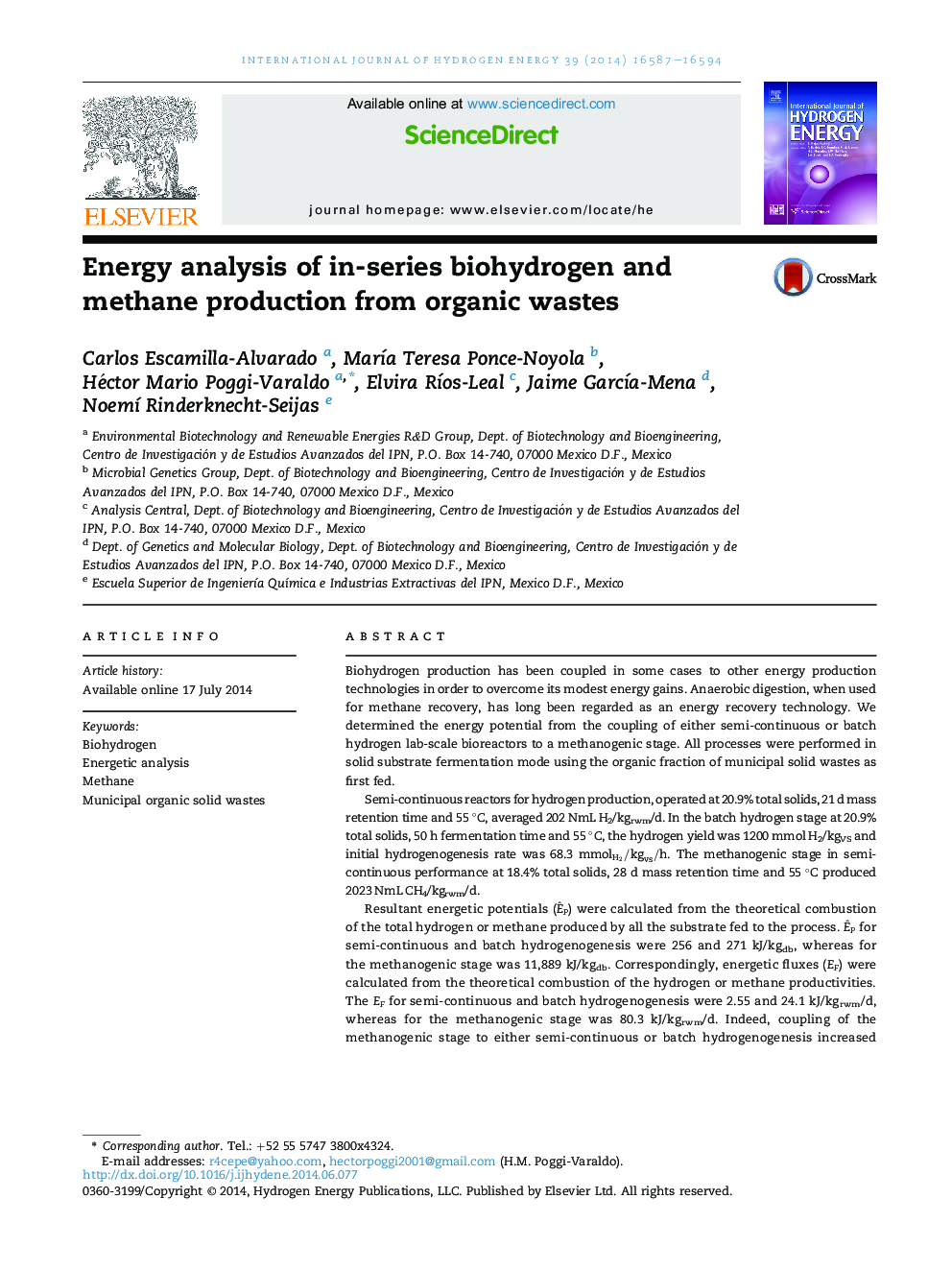| Article ID | Journal | Published Year | Pages | File Type |
|---|---|---|---|---|
| 1281000 | International Journal of Hydrogen Energy | 2014 | 8 Pages |
•OFMSW was partially converted into gas biofuels: hydrogen and methane.•Hydrogen production was compared in batch (Bt) and semi-continuous (Sc) process.•The energetic feasibility of coupled hydrogen and methane production was calculated.•Energetic potentials from H2 from Sc and Bt were increased over 43 folds by CH4.•Energetic flux from H2 from Sc and Bt were increased 31 and 3.5 folds respectively.
Biohydrogen production has been coupled in some cases to other energy production technologies in order to overcome its modest energy gains. Anaerobic digestion, when used for methane recovery, has long been regarded as an energy recovery technology. We determined the energy potential from the coupling of either semi-continuous or batch hydrogen lab-scale bioreactors to a methanogenic stage. All processes were performed in solid substrate fermentation mode using the organic fraction of municipal solid wastes as first fed.Semi-continuous reactors for hydrogen production, operated at 20.9% total solids, 21 d mass retention time and 55 °C, averaged 202 NmL H2/kgrwm/d. In the batch hydrogen stage at 20.9% total solids, 50 h fermentation time and 55 °C, the hydrogen yield was 1200 mmol H2/kgVS and initial hydrogenogenesis rate was 68.3 mmolH2/kgvs/hmmolH2/kgvs/h. The methanogenic stage in semi-continuous performance at 18.4% total solids, 28 d mass retention time and 55 °C produced 2023 NmL CH4/kgrwm/d.Resultant energetic potentials (ÊP) were calculated from the theoretical combustion of the total hydrogen or methane produced by all the substrate fed to the process. ÊP for semi-continuous and batch hydrogenogenesis were 256 and 271 kJ/kgdb, whereas for the methanogenic stage was 11,889 kJ/kgdb. Correspondingly, energetic fluxes (EF) were calculated from the theoretical combustion of the hydrogen or methane productivities. The EF for semi-continuous and batch hydrogenogenesis were 2.55 and 24.1 kJ/kgrwm/d, whereas for the methanogenic stage was 80.3 kJ/kgrwm/d. Indeed, coupling of the methanogenic stage to either semi-continuous or batch hydrogenogenesis increased their energetic potentials by 4600 and 4300%. These results showed the clear advantage of the methanogenesis coupling in order to yield high energetic potentials from wastes.
